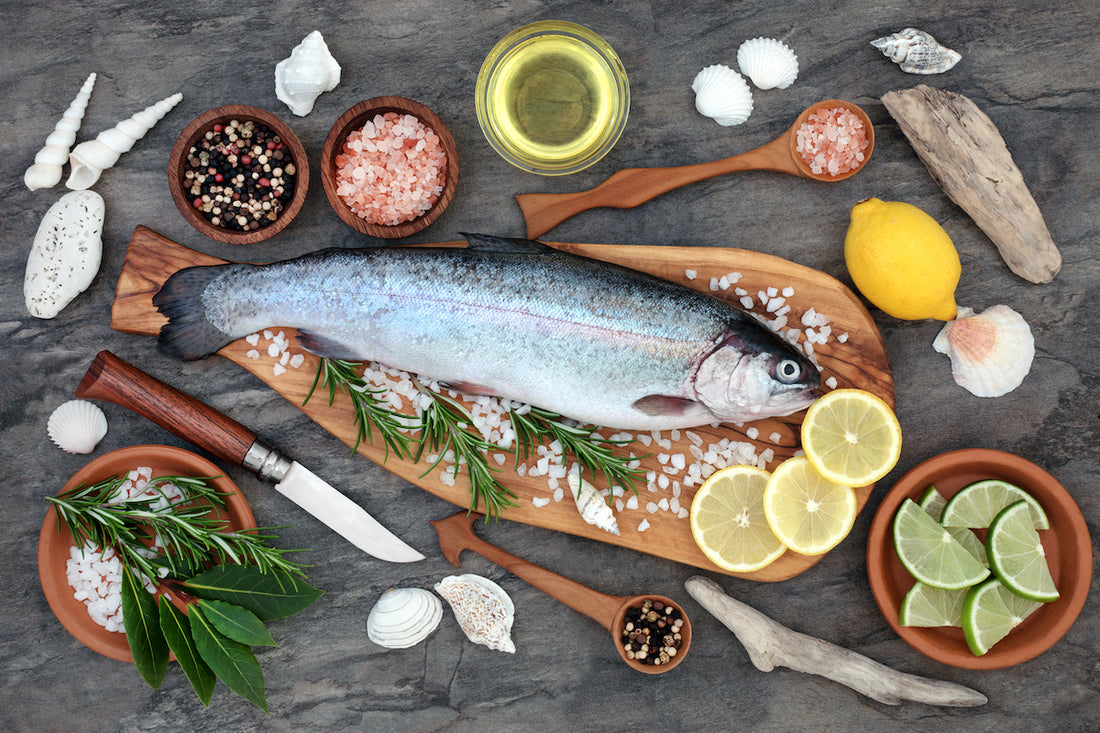Trout is considered an incredibly versatile and nutritious meal for your diet. But you might be surprised to find out the flavor differences once you compare the trout varieties. For example, what’s so different between rainbow trout and steelhead trout?
Putting the two fish side-by-side, you might be able to gauge some quick differences based on their appearances. While one fish has a stunning rainbow coloring, the other has more of a basic look with the same common speckles.
While each trout may look vastly different, it’s also beneficial to understand how their habitats contribute to their tastes when cooking up your next big seafood meal.
Rainbow Trout
Rainbow trout live in freshwater environments, such as lakes or rivers. They’re considered sustainable fish — and even an invasive species in some areas. Catching and eating this nutritious fish is highly encouraged.
These fish eat just about anything. Their diet consists mainly of zooplankton when they’re young, but they’ll often eat fish eggs, small fish and mollusks as they age.
Steelhead Trout
Steelhead trout are anadromous, meaning they spend some of their lives in freshwater and the remainder in saltwater. These fish are born in freshwater and migrate to saltwater environments before returning to freshwater to spawn. After reproducing, they head back to the open waters to repeat the cycle again.
Steelhead trout also eat a varied diet but have more options available with the extended menu provided in the ocean. Because of their increased diet, steelhead trout are typically larger than rainbow trout.
How Are They Different?
Both fish are of the same species but live vastly different lifestyles. While both occupy freshwater environments, steelhead trout spend some of their lives in saltwater terrains. These environmental differences create a distinct appearance for each fish.
Rainbow trout have a beautiful rainbow coloring consisting of blues, greens and yellows. They tend to have a silvery underside and dark speckles wrapped around their body.
On the other hand, the saltwater environment largely contributes to the color differences of steelhead trout. These fish are more silvery in color and also contain speckles around their body.
Which Trout is Better?
Much like the appearance of each fish, their habitats also lead to unique flavors in the kitchen. While rainbow trout eat a varied diet in a freshwater environment, the diverse options in the open ocean lend to a different taste in steelhead trout.
Many consider rainbow trout to have more of a gamey flavor, although it’s still mild compared to other freshwater fish. Chefs often describe rainbow trout as having a nut-like flavor with a slightly sweet taste. Rainbow trout is perfect for baking, pan frying, grilling or poaching.
Steelhead trout is often compared to salmon with its similar texture and flavoring. This fish is incredibly versatile and excellent for soaking up flavorful herbs and ingredients, like lemon or black pepper. Steelhead trout is also an excellent fish to bake, pan fry, poach or throw on the grill for a delicious meal.
While you don’t want to eat rainbow fish raw, steelhead trout can be an excellent addition while making sushi or sashimi dishes. Bon Appétit mentions that steelhead trout can be easier to slice than salmon due to the lower fat content. Steelhead trout also has a velvety texture and takes less time to cure.
Both rainbow trout and steelhead trout have delicate, flaky textures for a flavorful meal. Whether cooking up fresh fish tacos or preparing to toss fresh fish into your salad, rainbow trout and steelhead trout are extremely versatile fish in the kitchen.
Rainbow trout is an excellent option if you’re looking for a mild freshwater fish to cook up. On the other hand, steelhead trout is a delightful replacement if you want to swap out salmon for dinner on occasion.
Our trout collection features high-quality, wild-caught fish fresh from the pure rivers of the Rocky Mountains. At Tonight We Dine, our seafood is sourced from ethical suppliers and flash-frozen to ensure optimal freshness. Our premium seafood collection guarantees fresh, sustainable and delicious meals on your table.
